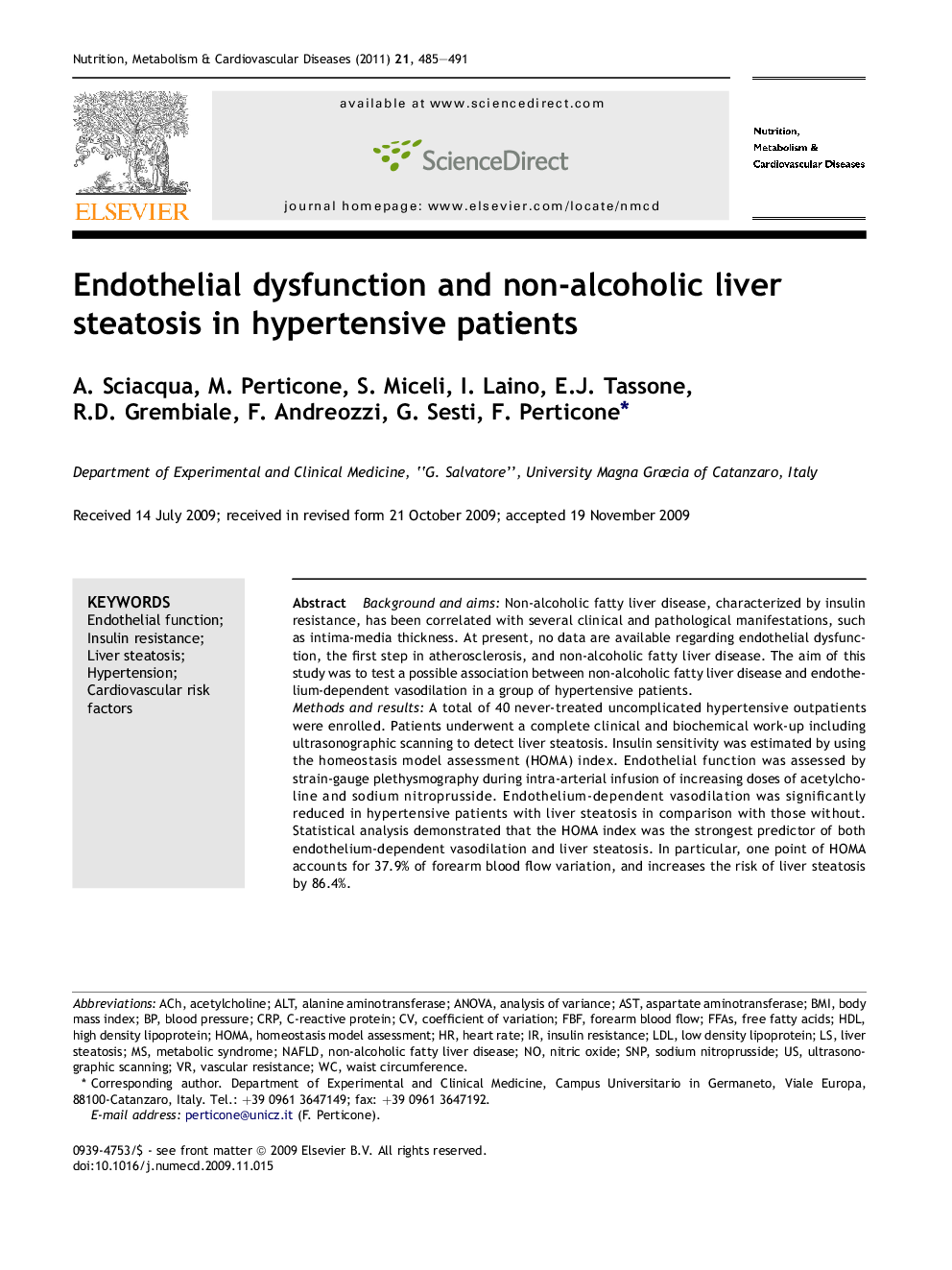| Article ID | Journal | Published Year | Pages | File Type |
|---|---|---|---|---|
| 5996638 | Nutrition, Metabolism and Cardiovascular Diseases | 2011 | 7 Pages |
Background and aimsNon-alcoholic fatty liver disease, characterized by insulin resistance, has been correlated with several clinical and pathological manifestations, such as intima-media thickness. At present, no data are available regarding endothelial dysfunction, the first step in atherosclerosis, and non-alcoholic fatty liver disease. The aim of this study was to test a possible association between non-alcoholic fatty liver disease and endothelium-dependent vasodilation in a group of hypertensive patients.Methods and resultsA total of 40 never-treated uncomplicated hypertensive outpatients were enrolled. Patients underwent a complete clinical and biochemical work-up including ultrasonographic scanning to detect liver steatosis. Insulin sensitivity was estimated by using the homeostasis model assessment (HOMA) index. Endothelial function was assessed by strain-gauge plethysmography during intra-arterial infusion of increasing doses of acetylcholine and sodium nitroprusside. Endothelium-dependent vasodilation was significantly reduced in hypertensive patients with liver steatosis in comparison with those without. Statistical analysis demonstrated that the HOMA index was the strongest predictor of both endothelium-dependent vasodilation and liver steatosis. In particular, one point of HOMA accounts for 37.9% of forearm blood flow variation, and increases the risk of liver steatosis by 86.4%.ConclusionOur data demonstrate that hypertensive patients with liver steatosis have a reduced endothelium-dependent vasodilation and highest insulin resistance. In keeping with this, it is possible to hypothesize that liver steatosis may be considered a marker of vascular damage in essential hypertension.
